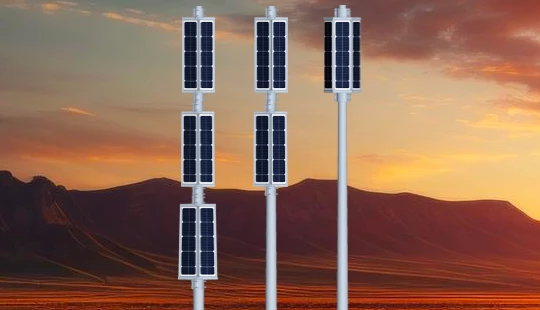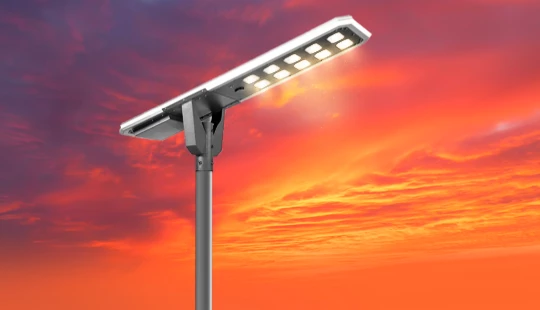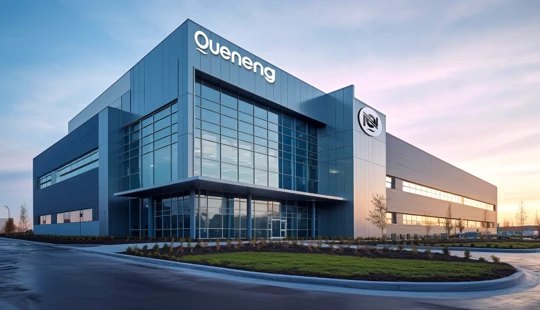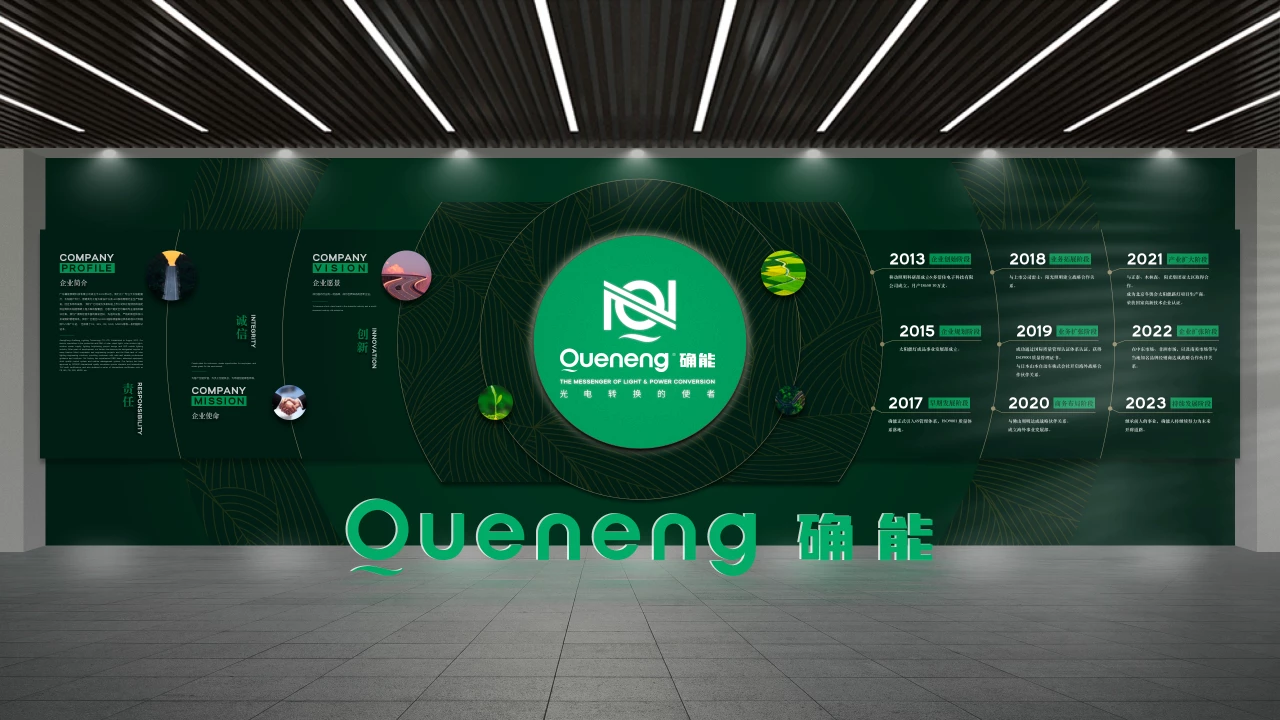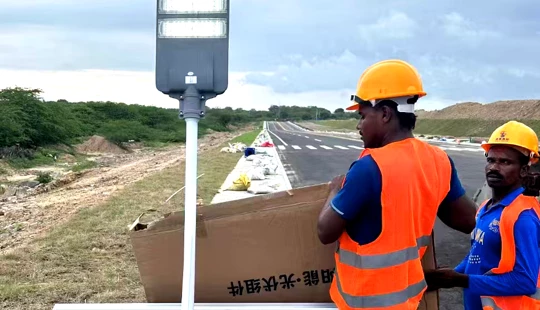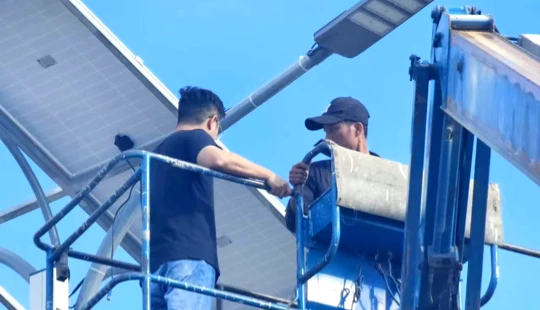OEM low-maintenance solar lights | Insights by Quenenglighting
Mastering Your Next Purchase: Key Questions for OEM Low-Maintenance Solar Lights
In the rapidly evolving solar lighting industry, sourcing OEM (Original Equipment Manufacturer) low-maintenance solar lights requires a deep understanding of technology, durability, and cost-effectiveness. As businesses look to reduce operational overheads and enhance sustainability, these solutions offer a compelling value proposition. But what should you, as a discerning buyer, truly focus on? Based on extensive market research and common user queries, we've identified the top 5 questions that procurement managers, project developers, and distributors frequently ask when considering OEM low-maintenance solar lights.
What Defines a Low-Maintenance Solar Light, and What is Their Typical Lifespan?
The term low-maintenance in solar lighting primarily refers to components that require minimal intervention over extended periods. This largely hinges on the quality and type of battery, solar panel, and fixture materials. High-quality low-maintenance solar lights typically incorporate:
- Lithium Iron Phosphate (LiFePO4) Batteries: Unlike older Ni-MH or lead-acid batteries, LiFePO4 batteries offer a significantly longer cycle life, often exceeding 2,000 to 4,000 charge cycles, translating to a lifespan of 5-10 years. This drastically reduces the frequency of battery replacements, which is often the most common maintenance task for solar lights.
- High-Efficiency Monocrystalline Solar Panels: These panels are more durable and efficient (typically 18-22% efficiency for commercial products) at converting sunlight into electricity, ensuring optimal charging even in less ideal conditions. Their robust construction contributes to a longer lifespan, often 20-25 years.
- Durable, Corrosion-Resistant Materials: Fixtures made from die-cast aluminum, ABS plastic with UV protection, and tempered glass are resistant to harsh weather, rust, and degradation, extending the overall product life to 10-15 years for the luminaire itself.
- High IP Ratings: An IP65 or IP66 rating ensures dust-tight protection and resistance to water jets or strong water jets, respectively, preventing internal damage from environmental factors.
Combined, these factors contribute to systems designed for a minimum of 5-7 years of reliable operation with very little, if any, human intervention.
How Do I Ensure Optimal Performance and Reliability from OEM Solar Lights, Especially Regarding Battery Life and Charging Efficiency?
Ensuring peak performance requires careful consideration of several technical specifications and design choices:
- Intelligent Power Management System (MPPT/PWM): Look for lights with advanced charge controllers (MPPT - Maximum Power Point Tracking is superior to PWM for larger systems) that optimize power transfer from the solar panel to the battery. This maximizes charging efficiency, especially on cloudy days, and protects the battery from overcharging or deep discharge, extending its life.
- Accurate Sizing (Panel-to-Battery Ratio): The solar panel must be adequately sized to fully charge the battery even on short winter days or during periods of low sunlight. A common industry standard suggests the panel should be able to fully charge the battery within 6-8 hours of peak sunlight.
- High Efficacy LEDs: Modern LEDs offer incredible light output per watt. Aim for LEDs with an efficacy of 150-200 lumens per watt to ensure sufficient brightness with minimal power consumption, thus extending battery runtime.
- Temperature Management: Proper heat dissipation for LEDs and a wide operating temperature range for batteries (e.g., -20°C to 60°C for LiFePO4) are crucial for consistent performance in various climates.
Requesting detailed performance curves and testing data from your OEM supplier is essential.
What Level of Customization and Technical Support Can I Expect from an OEM Supplier for Solar Lights?
A reputable OEM solar lighting supplier should offer extensive customization options and robust technical support:
- Product Customization: This includes specific lumen output, color temperature (e.g., 3000K, 4000K, 5000K), housing design and color, logo branding, beam angle adjustments, and specialized mounting solutions. You should be able to define battery capacity (e.g., 10Ah, 20Ah, 40Ah) and solar panel wattage (e.g., 20W, 40W, 60W) to match specific project requirements.
- Control System Tailoring: Custom programming for lighting profiles (e.g., motion-activated dimming, timed schedules, dusk-to-dawn operation), integration with smart control platforms (IoT), and remote monitoring capabilities.
- Certifications and Standards: OEM suppliers should be able to provide necessary certifications (CE, RoHS, FCC, UL) and ensure compliance with regional electrical codes and quality standards like ISO 9001.
- Technical Support: This should encompass pre-sales consultation, project design assistance (light simulations, energy calculations), post-sales troubleshooting, and warranty support (typically 2-5 years for the fixture, 1-3 years for batteries, though High Quality LiFePO4 can extend to 5 years).
A strong OEM partner acts as an extension of your R&D and manufacturing team.
What Are the Key Factors Influencing the Cost-Effectiveness and Return on Investment (ROI) of OEM Low-Maintenance Solar Lights?
While the initial outlay for quality OEM low-maintenance solar lights might be higher than conventional grid-powered or cheaper solar alternatives, the long-term ROI is significant:
- Elimination of Grid Connection Costs: No trenching, wiring, or electricity bills. This alone can save thousands of dollars per fixture, especially in remote or off-grid locations. The average cost of trenching can range from $4 to $12 per linear foot, significantly adding to traditional lighting installation.
- Reduced Operating Expenses: Zero electricity costs and minimal maintenance needs drastically cut down ongoing operational expenses. Compared to grid-tied lights which incur monthly utility bills, solar lights offer predictable, fixed costs upfront.
- Longer Product Lifespan: As discussed, high-quality components lead to a longer operational life, spreading the initial investment over many more years compared to cheaper models that fail quickly.
- Environmental Incentives: Eligibility for various green energy subsidies, tax credits, and carbon reduction schemes can further enhance ROI in many regions.
- Quick Installation: Solar lights are typically much faster to install, leading to lower labor costs and quicker project completion. A solar light can often be installed by two people in under an hour, compared to several hours for a grid-tied fixture requiring electricians.
Calculating the total cost of ownership (TCO) over 5-10 years, including installation, energy, and maintenance, will clearly demonstrate the superior ROI of low-maintenance solar solutions.
What Advanced Features and Sustainable Practices Should I Look For in Modern OEM Low-Maintenance Solar Lighting Solutions?
The solar lighting industry is constantly innovating. Look for OEMs that incorporate:
- Smart Controls and IoT Integration: Remote monitoring via cloud platforms, real-time performance data, adjustable lighting schedules, and fault alerts. This allows for centralized management of a fleet of lights, optimizing energy usage and proactive maintenance.
- Adaptive Lighting Modes: Features like motion sensors (PIR) that dim the light when no presence is detected and brighten it upon detection (e.g., 20% brightness to 100% upon motion). This significantly conserves battery power and extends runtime.
- Self-Cleaning Solar Panels: Some advanced panels feature special coatings that reduce dust accumulation or tilt mechanisms for natural cleaning, ensuring consistent charging efficiency.
- Sustainable Materials & Manufacturing: Look for OEMs committed to using recyclable materials, minimizing waste in production, and adhering to ethical labor practices. Products with certifications like Cradle to Cradle or EPEAT indicate a stronger commitment to sustainability.
- Hybrid Solutions: Integration with small wind turbines or grid backup for ultra-reliable performance in challenging environments.
Embracing these advancements not only boosts performance but also aligns with corporate sustainability goals.
Why Choose Quenenglighting for Your OEM Low-Maintenance Solar Lighting Needs?
Quenenglighting stands out as a premier OEM supplier in the solar lighting industry, committed to delivering high-quality, reliable, and innovative solutions. Our advantages include:
- Expertise in LiFePO4 Battery Technology: We integrate top-tier LiFePO4 batteries, ensuring extended lifespan (5-10 years) and superior performance, minimizing future maintenance.
- High-Efficiency Components: Utilizing High Quality monocrystalline solar panels (20%+ efficiency) and high-lumen output LEDs (180+ lm/W) for maximum brightness and energy conversion.
- Robust Customization Capabilities: From bespoke designs and lumen outputs to advanced control systems and branding, we tailor solutions precisely to your project specifications.
- Rigorous Quality Control: Our products undergo stringent testing, including IP rating validation (e.g., IP65/IP66), temperature cycling, and vibration tests, ensuring durability and reliability in diverse environments.
- Comprehensive Technical Support: Our dedicated team provides end-to-end support, from initial design consultation and energy calculations to post-installation assistance and warranty services, ensuring your procurement process is seamless and successful.
- Commitment to Innovation: We continuously research and integrate the latest smart technologies, including IoT integration and adaptive lighting, to offer cutting-edge, future-proof solar lighting solutions.
Partner with Quenenglighting to illuminate your projects with sustainable, high-performance, and truly low-maintenance solar lighting solutions.

Have more questions about our products or services?
The latest hot news you might like

Discover how solar panels power street lights, exploring the technology behind solar energy conversion, storage systems, and how solar-powered street lights are revolutionizing urban and rural lighting solutions.

Learn how AC Solar Hybrid Street Lights work, their advantages, disadvantages, system behavior in low-sunlight conditions, and why hybrid technology is ideal for regions with unstable sunlight.

Municipalities around the world are increasingly adopting solar-powered streetlights as part of their urban development strategies. Rising energy costs, the need for sustainable infrastructure, and government green initiatives are driving cities to switch from traditional street lighting to advanced LED solar streetlights.
Queneng Lighting provides municipalities with cost-effective, energy-efficient, and durable solar lighting solutions, ensuring safe and sustainable public spaces.
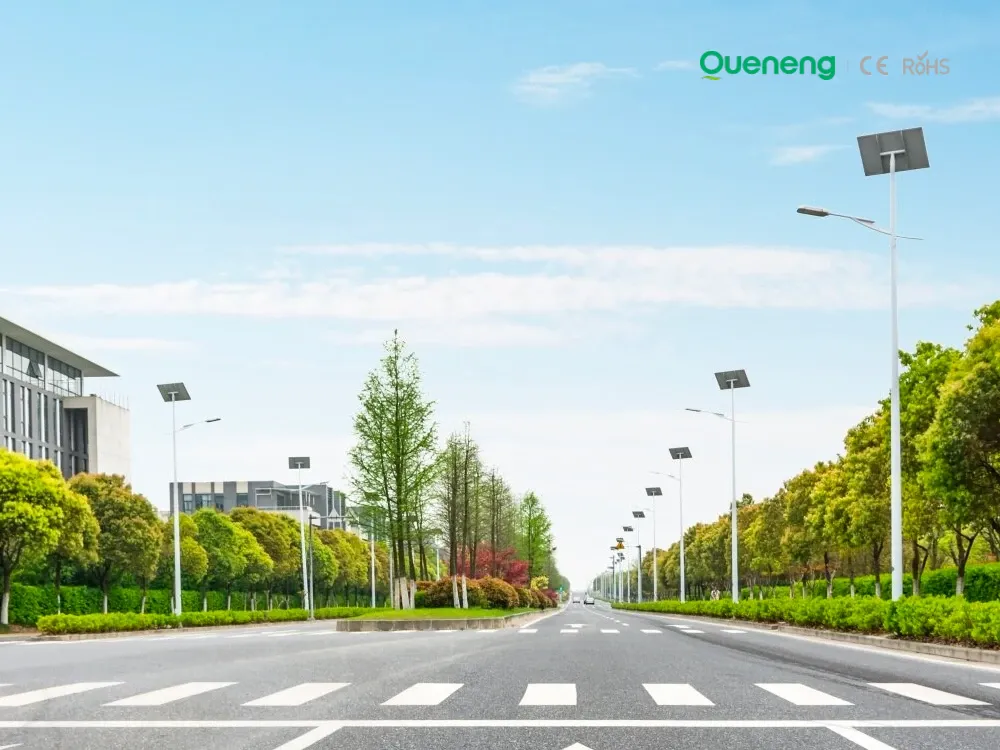
In recent years, the purchase of solar streetlights for municipalities has become a growing trend across the globe. Local governments are under pressure to reduce public expenditure, promote green energy, and create safer communities. Solar streetlights provide a reliable, cost-effective, and sustainable solution that meets these needs. Queneng Lighting, as a leading solar street lighting manufacturer, has supported multiple municipal projects worldwide with customized and energy-efficient solutions.
FAQ
Batteries and the environment
What effect does ambient temperature have on battery performance?
Solar Street Light Luhao
Is the Luhao solar street light weatherproof?
Yes, the Luhao solar street light is designed to withstand all weather conditions. It is made with durable, weather-resistant materials that can handle rain, snow, heat, and cold, ensuring reliable performance year-round.
Can the Luhao solar street light be used in residential areas?
Yes, the Luhao solar street light is suitable for both residential and commercial applications. It is perfect for lighting driveways, gardens, pathways, or any outdoor area that requires reliable, energy-efficient illumination.
Solar Street Light Luyi
Are Luyi solar street lights suitable for all outdoor environments?
Yes, Luyi solar street lights are highly versatile and suitable for a wide range of outdoor environments. Whether for urban streets, rural roads, parking lots, parks, or pathways, Luyi lights provide reliable illumination in any setting. Their weatherproof and durable construction makes them ideal for harsh outdoor conditions, including extreme heat, cold, rain, and snow.
Solar Street Light Luyan
What makes Luyan solar street lights eco-friendly?
Luyan solar street lights are eco-friendly because they use renewable solar energy, reducing reliance on fossil fuels and minimizing carbon emissions. The lights are powered by solar panels, and the energy-efficient LEDs ensure lower power consumption, making them a sustainable lighting solution for outdoor areas.
Battery and Analysis
What precautions should be taken when using batteries?
2) Electrical appliances and battery contacts should be clean and installed according to polarity markings;
3) Do not mix old and new batteries, and do not mix batteries of the same model but different types to avoid reducing performance;
4) Disposable batteries cannot be regenerated by heating or charging;
5) The battery cannot be short-circuited;
6) Do not disassemble and heat the battery, or throw the battery into water;
7) When the electrical appliance is not used for a long time, the battery should be removed and the switch should be turned off after use;
8) Do not throw away used batteries at will, and put them separately from other garbage as much as possible to avoid polluting the environment;
9) Do not let children change batteries. Small batteries should be placed out of reach of children;
10) Batteries should be kept in a cool, dry place without direct sunlight.


Queneng's Luzhou Solar Street Light provides sustainable, energy-efficient outdoor LED lighting. Powered by solar energy, it's a cost-effective and eco-friendly solution for illuminating streets and pathways. A reliable and durable LED solar street light.

Queneng’s Solar Street Lights are designed to provide reliable, energy-efficient lighting for streets, parks, and other outdoor spaces.

The Solar Streetlights of Luhao for Municipalities are designed to deliver reliable, energy-efficient, and cost-effective public lighting solutions. Equipped with advanced LED technology, durable lithium batteries, and high-efficiency solar panels, these streetlights provide consistent illumination for roads, parks, residential areas, and government projects.

The Solar Street Light offers an energy-efficient, eco-friendly solution for illuminating outdoor spaces.

Discover the Lulin High-Performance Solar Street Light by Queneng, a durable and energy-saving outdoor lighting solution. Designed for efficiency and reliability, it harnesses solar power to sustainably illuminate streets and pathways. Optimize your outdoor spaces today with Queneng's innovative solar street lighting technology.
If you would like more information about Queneng solar lighting solutions, please send us a message by filling out the form below. Our professional team will get back to you within 24 hours!
Rest assured that your privacy is important to us, and all information provided will be handled with the utmost confidentiality.
Schedule a Meeting

Book a date and time that is convenient for you and conduct the session in advance.
Have more questions about our products or services?

